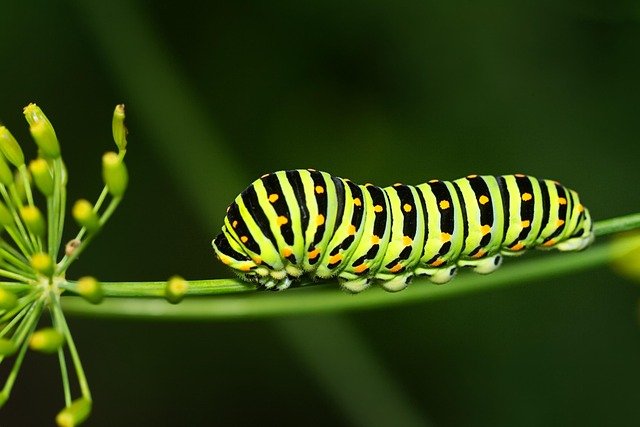Have you ever watched a little caterpillar crawl on a leaf and later seen a butterfly flying in the sky? Or maybe you’ve seen a tiny tadpole swimming in a pond and then one day, it turns into a frog with legs?
It’s kind of like magic, isn’t it?
But it’s not magic. It’s science. It’s something called a life cycle.
In this article, we’re going to explore how some animals grow and change. You’ll learn how a small egg becomes a wiggly caterpillar, and then a beautiful butterfly. You’ll also see how a slippery tadpole slowly turns into a frog that can jump far and croak loudly.
Life cycles are all around us. They help us understand how living things grow, change, and survive. And the best part? It’s all really fun to learn.
The Butterfly’s Life Cycle: From Egg to Wings
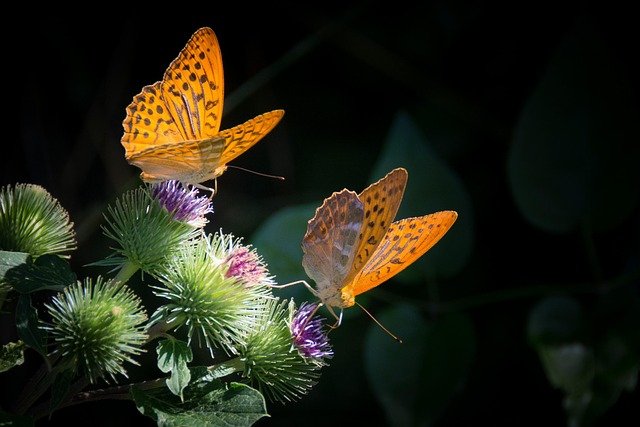
Nature is full of little surprises. And the butterfly? It’s one of the best examples of how something small and simple can turn into something bright, bold, and beautiful. Let’s break down every stage carefully so you can really picture it in your mind.
🌱 Stage 1: The Egg – Where It All Begins
Every butterfly starts its life as a tiny egg. These eggs are so small, you might miss them if you don’t look closely. A butterfly usually lays her eggs on the underside of leaves. Why? Because this is where her babies (the caterpillars) will find food the moment they hatch. Clever, right?
Some eggs are round, some are long, and some are a little bumpy. Each type of butterfly has its own special kind of egg.
Inside this little egg is a growing baby caterpillar. It’s curled up tight, just waiting to come out.
Fun fact: Some butterflies lay only one egg per leaf. Others lay hundreds of eggs at once!
🐛 Stage 2: The Caterpillar – The Eating Machine
When the egg hatches, out comes a tiny caterpillar. This little one is super hungry. It starts eating right away—and its first meal? The shell it hatched from! Yep, that egg shell is full of nutrients.
After that, it moves on to leaves. And it eats. And eats. And eats.
This stage is all about growing. As the caterpillar eats, it gets bigger. But here’s something cool—a caterpillar’s skin doesn’t stretch. So, when it grows too big, it sheds its skin and gets a new one. This happens again and again—maybe 4 or 5 times!
Each time it sheds, it’s called a molt.
Some caterpillars are green. Some are striped. Some are even fuzzy. But all of them are focused on one job: growing big and strong so they can change into something else.
Fun fact: A caterpillar can grow over 100 times its size in just a few weeks!
🛌 Stage 3: The Chrysalis – The Quiet Change
Once the caterpillar is big enough, it finds a safe place to hang—like under a leaf or on a branch. Then, something magical happens.
It forms a hard shell around itself. This is called a chrysalis (some people call it a pupa). It looks like a little pod or case.
Now here’s the amazing part: Inside this shell, the caterpillar is changing. Really changing.
It doesn’t just grow wings and call it a day. Its entire body melts into a soft liquid. Then, bit by bit, it forms new parts—a head, eyes, legs, antennae, and yes, beautiful wings.
This stage can last a few days or even a few weeks, depending on the butterfly species and the weather.
It may look like nothing is happening—but inside, it’s one of nature’s biggest transformations.
Fun fact: The word “metamorphosis” means this total change from one shape to another. It’s what makes butterflies so special!
🦋 Stage 4: The Butterfly – Time to Fly
Finally, the chrysalis starts to crack open. Slowly, the new butterfly comes out.
At first, it doesn’t look ready. Its wings are soft, wet, and all curled up. So it waits. It sits quietly, letting its wings dry and stretch out. This can take a few hours.
And then—whoosh! It flies!
The butterfly now begins its grown-up life. It visits flowers to drink nectar, helps plants grow by spreading pollen, and looks for a place to lay eggs.
And so, the life cycle begins all over again.
Fun fact: Some butterflies only live a few days. Others live for months and even travel thousands of miles across the world!
The Frog’s Life Cycle: From Pond to Land
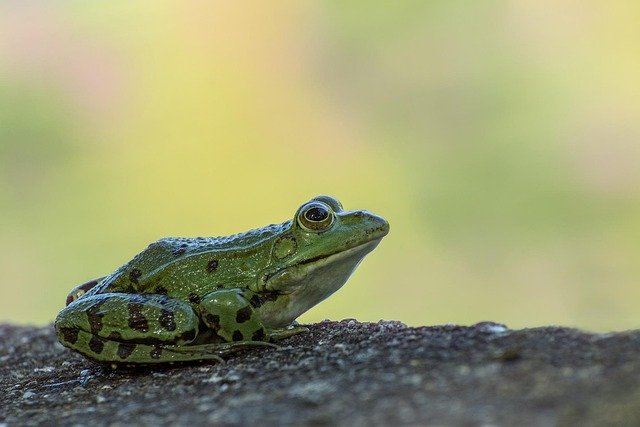
Have you ever seen a frog leap high into the air? Or heard them croaking near a pond? Frogs might look simple, but their journey from baby to adult is full of big changes. Frogs are amphibians, that means they live both in water and land. Mostly found in pond ecosystems.
Just like butterflies, frogs go through a special kind of growth called metamorphosis. This means they start their life looking one way, and end up looking completely different!
Let’s look at how that happens.
🌊 Stage 1: The Egg – A Jelly-Like Start
Frogs begin life in water.
A mother frog lays hundreds of tiny eggs in a bunch, like a jelly-filled bunch of grapes. These eggs float in the water—usually in a pond, lake, or slow-moving stream.
Each egg is like a little bubble with a tiny black dot in the middle. That dot? It’s the baby frog starting to grow.
The jelly keeps the eggs safe from harm, like a soft blanket. But frogs lay a lot of eggs because many might not survive. Some get eaten. Some don’t hatch. But enough do to keep the frog family growing.
Fun fact: A group of frog eggs is called frogspawn.
🐣 Stage 2: The Tadpole – The Wiggly Swimmer
After a few days or weeks, the eggs hatch.
Out come tiny black tadpoles. They don’t look like frogs yet. In fact, they look more like little fish! Tadpoles have tails and no legs. They live in water, breathe through gills, and swim by wiggling their bodies.
At this stage, a tadpole is all about survival and eating. They munch on water plants and algae. Slowly, their bodies begin to change.
After a week or two, you’ll start to notice something: the tadpole starts growing tiny legs at the back. Soon, the front legs follow.
Its tail becomes smaller and smaller.
And here comes the big switch…
🐸 Stage 3: The Froglet – Half Tadpole, Half Frog
This stage is super cool. The tadpole is turning into a frog, but it’s not quite there yet.
Now it has:
- A small tail
- Four legs
- Lungs for breathing air instead of gills
It can now come up to the surface and take a breath! It also starts to hop a little, using its back legs.
But it’s still tiny, and it still has a tail. That’s why we call it a froglet.
Over the next few days, the tail keeps shrinking… until it disappears.
Now we have a full frog!
🌿 Stage 4: The Adult Frog – Ready for Land and Water
The froglet has grown up. It’s now an adult frog.
Adult frogs are built for both land and water. They have:
- Strong back legs for jumping
- Sticky tongues for catching bugs
- Smooth skin that helps them stay moist
- No tail at all
Now the frog hops on land, jumps into water, and sings with a big “Ribbit!” or “Croak!” It eats insects and worms, and when the time comes, it finds a pond to lay its own eggs.
And just like that, the cycle starts all over again.
Fun fact: Frogs can live up to 10 years in the wild, and they’re super important for nature because they eat so many bugs!
Butterfly vs. Frog: Two Life Cycles, One Big Idea
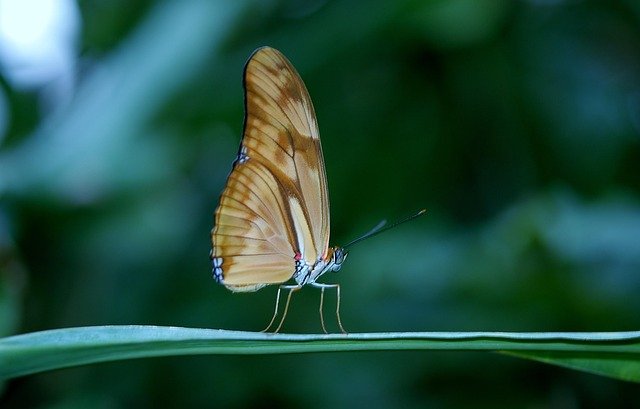
Even though butterflies and frogs are so different—they live in different places, move in different ways, and look nothing alike—their life cycles teach us one big truth:
🌱 Change is natural. And it’s beautiful.
Let’s walk through this side-by-side and look at what both animals go through, what makes them similar, and what makes them unique.
🥚 Stage One: The Egg
This is where life begins for both creatures.
- Butterfly eggs are laid one at a time on leaves. They are tiny, round, and stick to the surface. The mother butterfly is very careful about where she lays them because her babies (the caterpillars) will need fresh leaves to eat as soon as they hatch.
- Frog eggs are laid in water. The mother lays hundreds—sometimes thousands—at once! They stick together in a jelly-like group called frogspawn. They float, sometimes near the edges of ponds where the water is calm.
🔍 Both creatures start small and helpless. Their eggs need the right place, warmth, and time to hatch.
🐣 Stage Two: The Young One
This is where things get exciting. The eggs hatch!
- Butterflies hatch into caterpillars. These are little worm-like creatures with many legs. Their first job? Eat, eat, and eat some more! Caterpillars live on land and munch on leaves all day. Every time they grow too big, they shed their skin.
- Frogs hatch into tadpoles. These look more like tiny fish. They live completely in water, have gills (not lungs), and swim using their tails. They don’t have legs at first.
🔍 At this stage, both the caterpillar and tadpole look nothing like their parents. They are in a growing stage where eating, moving, and getting stronger are the main jobs.
🛌 Stage Three: The Big Change
Now the real transformation begins.
- The caterpillar stops eating, hangs upside down, and forms a hard shell called a chrysalis. Inside, its body completely changes. It doesn’t grow wings from its back—it melts down into a soft shape, and then slowly builds a butterfly body inside the shell.
- The tadpole starts to grow legs. First the back legs appear, then the front. At the same time, the tail shrinks, the gills are replaced with lungs, and it becomes a froglet—half tadpole, half frog.
🔍 Both creatures go through a major transformation. This isn’t like just getting taller—it’s becoming something totally different.
🦋🐸 Stage Four: The Adult
Now the butterfly and frog are fully grown and ready to live their grown-up lives.
- Butterflies can fly, drink nectar from flowers, and pollinate plants. Some butterflies live for just a few days, others for months. Some even travel across countries!
- Frogs can live both in water and on land. They breathe air, jump far with their strong legs, and eat bugs. Some frogs live in the wild for many years, helping balance nature by keeping insect numbers low.
🔍 Now, both animals can start the cycle again by laying eggs and helping the next generation begin their journey.
So, What’s the Big Idea?
The butterfly and frog are different in so many ways:
| Feature | Butterfly | Frog |
|---|---|---|
| Grows in… | On land | In water |
| Moves by… | Flying | Jumping and swimming |
| Eats… | Nectar or nothing (some adults don’t eat) | Insects and worms |
| Changes in… | A shell (chrysalis) | Open water, no shell |
| Young form | Caterpillar | Tadpole |
But they both show us the same big truth:
Growing takes time. Changing can look strange. But the result is amazing.
It’s a powerful message for kids: Even if things feel slow or hard right now, you’re growing into something special. Just like a frog. Just like a butterfly.
How Debsie Makes Life Science Real and Exciting

At Debsie, we believe learning science should feel like you’re stepping into a new world—not just staring at a screen.
That’s why everything we do is built to spark curiosity, build deep understanding, and make kids fall in love with learning.
When your child learns life cycles with Debsie, they don’t just memorize stages from a textbook. They watch real creatures change, ask questions, talk to experts, and take part in fun challenges. It’s learning that feels like play, but builds skills for a lifetime.
Here’s how we bring life science to life:
🔬 1. Live, Hands-On Science Classes
Our live online classes are led by real, experienced teachers who specialize in working with kids.
In our life science classes, your child might:
- Watch live footage of a butterfly emerging from a chrysalis
- Take part in a discussion about frog habitats
- Observe a teacher raise tadpoles on camera—step by step
And the best part? Your child can ask questions anytime, and our teachers answer them right there in class.
👩🏫 Our teachers are not only science experts—they’re fun, kind, and know how to explain complex ideas in ways kids truly understand.
🧪 2. Self-Paced Science Adventures
Not every child learns the same way. Some like to go fast, some like to pause and explore.
That’s why Debsie offers self-paced science adventures, too. These are bite-sized, story-based digital courses filled with:
- Fun characters and interactive storytelling
- Real photos and videos of animals in their life cycles
- Little missions and quizzes that test your child’s thinking
It’s a great way for kids to explore at their own pace, rewatch what they love, and learn in a way that’s relaxed and joyful.
🎮 3. Gamified Learning: Quests, Badges, and Rewards
Every lesson at Debsie is part of a bigger journey.
As kids explore topics like metamorphosis, plant growth, or animal habitats, they complete:
- Quests: Like “The Caterpillar’s Climb” or “Frog Pond Patrol”
- Mini-Challenges: Spot the life cycle mistakes or build your own creature
- Badge Missions: Complete a hands-on activity to earn a science badge
Kids stay motivated because they’re not just learning—they’re playing, earning, and growing their science identity.
🌱 4. Projects That Build Real-World Thinking
Debsie goes beyond “watch and learn.” We encourage kids to:
- Raise real butterflies at home with our guided kits
- Start garden journals to track insects and flowers
- Explore local nature spots and document frog sightings
- Build models of life cycles using paper, clay, or digital tools
These activities build creativity, observation skills, and problem-solving—all while helping kids love science.
🌟 Parents often tell us: “My child now notices little things in nature they used to walk right past.”
That’s the Debsie difference.
❤️ 5. Built for Every Learning Style
Every child is unique. Some love drawing. Some love building. Some love asking questions. Some love solving puzzles.
Debsie’s platform supports every kind of learner with:
- Visual explanations
- Audio guides
- Real-life demos
- Creative assignments
- Guided science talks
- Fun experiments at home
No child is left behind, and no child is bored.
The Chicken’s Life Cycle: From Egg to Feathers
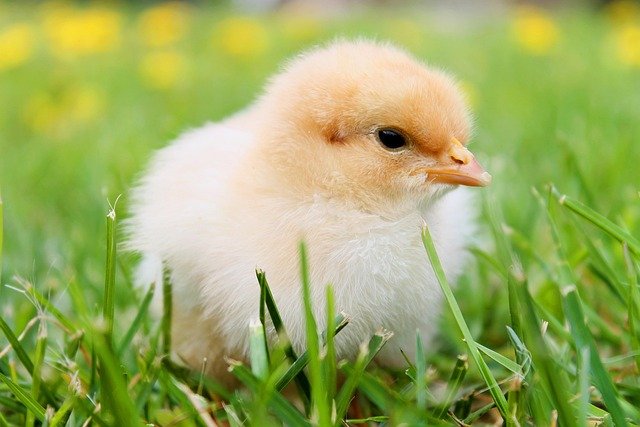
When most people think of chickens, they picture a grown bird pecking at the ground or clucking around a yard. But like butterflies and frogs, chickens go through their own special life cycle—and it’s full of wonder, especially inside the egg!
Let’s explore what happens step by step.
🥚 Stage 1: The Egg – A Hidden World Inside
Every chicken starts out as an egg.
But not all eggs turn into chicks. Only eggs that have been fertilized by a rooster (a male chicken) will grow into baby chicks.
Once laid, the fertilized egg needs warmth. That’s why the mother hen sits on the eggs. This is called incubation, and it lasts about 21 days.
Inside the egg, a tiny chick begins to grow. It starts as a tiny dot and slowly develops a head, beak, legs, and feathers. It gets all the food it needs from the yolk inside the egg.
Fun fact: A hen can lay one egg per day, but not all will hatch into chicks.
🐣 Stage 2: The Hatchling – Breaking Free
Around day 21, something amazing happens.
The chick uses a special little bump on its beak, called an egg tooth, to break the shell. It pecks and pushes until the shell cracks open. This process can take hours!
Once the chick breaks free, it’s wet, weak, and tired. It rests and lets its fluffy feathers dry.
Soon, it becomes a soft, fuzzy ball of yellow, brown, or black down. This stage is called the hatchling.
🐥 Stage 3: The Chick – Growing and Exploring
Once the chick has rested and dried, it’s full of energy.
Chicks are curious and love to explore. They eat small grains, drink water, and stay close to their mother or under a heat lamp if they’re raised without her.
During this stage, the chick grows fast:
- Tiny feathers start replacing the fluffy down
- Wings and legs get stronger
- They start pecking, scratching, and learning chicken behaviors
In just a few weeks, the chick looks more like a small chicken than a baby.
Fun fact: Chicks can recognize their mother’s voice while still inside the egg!
🐔 Stage 4: The Adult Chicken – Ready to Start the Cycle Again
By the time a chick is about 6 months old, it becomes a full-grown chicken.
- Hens (female chickens) can now lay eggs
- Roosters (males) start to crow and protect the flock
And just like that, the cycle starts all over again—with new eggs, new chicks, and new life.
🔄 A Quick Recap of the Chicken Life Cycle:
- Egg – Life starts hidden inside a warm egg
- Hatchling – Chick breaks free from the shell
- Chick – Grows quickly, learning how to eat and move
- Adult Chicken – Ready to lay eggs or crow
This life cycle is perfect for helping kids understand:
- How animals grow in eggs
- How care and warmth help new life develop
- How animals on farms are part of the cycle of life we see every day
Final Thoughts: Learning That Sticks for Life
The life cycles of butterflies, frogs, and chickens aren’t just science topics. They are real stories of change—of starting small, growing slowly, and becoming something amazing.
When children see how nature works, they also learn how they grow—how to be patient, how to stay curious, and how to trust the process. These are not just science lessons. They’re life lessons.
At Debsie, we make sure every child gets to experience that kind of learning. The kind that’s hands-on, joyful, and unforgettable.
So whether your child is just starting out or already exploring the world of science, there’s a place for them at Debsie. A place to grow, wonder, and thrive.
👉 Join us for a free class today.
👉 Explore our Science and STEM programs here.
Let’s raise the next generation of thinkers, builders, and curious minds—together.
Read Next:
